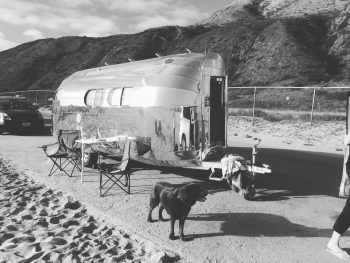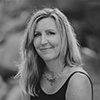“The butterfly counts not months but moments, and has time enough.”
–Rabindranath Tagore
When my husband retired four years ago, he heard the same chorus: “You’re going to be so bored!” I suppose I could see their point (sort of) – my husband was stepping away from a forty-year career, during which he’d built his own company, served as President of another, and was so respected in his industry that when he returned to work after a  three-year hiatus in 2004, he hired nearly a dozen former employees within two months. My husband’s identity is fueled first and foremost by his role as a father, but as far as making his mark on the world, it was his career that steered the ship.
three-year hiatus in 2004, he hired nearly a dozen former employees within two months. My husband’s identity is fueled first and foremost by his role as a father, but as far as making his mark on the world, it was his career that steered the ship.
So for those who knew him primarily in that universe, it shouldn’t have been terribly surprising that their reaction to the news of his retirement was an assumption that he would turn the corner away from his work life only to find a barren stretch of land where nothing more than a few lone tumbleweeds bounced by from time to time. My husband was driven, ambitious, and successful, so how on earth was he going to find fulfillment once he had all the time in the world?
Here’s the thing about my husband that might have surprised those who couldn’t imagine him living a happy life without his suit, tie, and title – work was never his number one thing. It was never all-consuming. It wasn’t even a part of him I knew much about during the first two years of our relationship because he was on a sabbatical when we met. I heard stories and saw glimpses, but it wasn’t something I experienced firsthand until he returned to work.
Even then, and over the course of the ensuing eight years before he retired for good, I never saw my husband as a workaholic.  Aside from travel and the occasional business dinner, when he came home at the end of the day, he was home. When we went on vacation, we were on vacation. He never brought his laptop to bed and he never spent a Saturday on a golf course with clients. So when someone proclaimed he would end up being bored without his work, we both laughed, knowing these comments were more likely a reflection of what the prospect of a life beyond work and career would mean for them rather than what was true for my husband.
Aside from travel and the occasional business dinner, when he came home at the end of the day, he was home. When we went on vacation, we were on vacation. He never brought his laptop to bed and he never spent a Saturday on a golf course with clients. So when someone proclaimed he would end up being bored without his work, we both laughed, knowing these comments were more likely a reflection of what the prospect of a life beyond work and career would mean for them rather than what was true for my husband.
Four years later, we’re still laughing – and slightly gobsmacked – to find he is not only not bored, but more active than ever. He has continued to do the things he could only do on the weekends while he was working – bike riding, playing violin, reading – and now has the time and space to dive deeper into other passions and interests that he’s had for most of his life. He isn’t merely taking more photographs – an interest that first took hold when he was given a camera as a ten-year old – he attended a photography workshop in Berlin, had a solo show in Los Angeles, and goes on photo shoots with Santi Visalli – one of the most renowned photographers of celebrities and public figures of the last four decades.

My husband is also on the phone a lot. Friends and former colleagues call him frequently for advice, guidance, and encouragement. He coaches and advises his son and son-in-law – both entrepreneurs with their own businesses – on everything from cash flow to employee relations. It also isn’t unusual to hear him perusing the pages of his favorite  cookbook while chatting with his best friend – a chef who helped ignite my husband’s passion for cooking.
cookbook while chatting with his best friend – a chef who helped ignite my husband’s passion for cooking.
Here’s another thing my husband (well, most of us, really) hears a lot: life is short. My husband happens to think the opposite is true. In his opinion, life is long. At first, I thought he had it backwards. Life isn’t long, I’d think, Life whizzes by faster than I can keep track of. But over time, I’ve come to appreciate his way of thinking. It might seem like the entirety of my life up to this moment has traveled along at warp speed, but when I stop and take a closer look at all the adventures I’ve had, I see how much is there. How could I have experienced as much as I have unless life were, in fact, long?

Boredom is simply not in my husband’s vocabulary, and because his approach to life is that there is plenty of time to do the things he loves, he has been able to find that elusive balance between exuberant creativity and much-needed, well-deserved downtime. In between his bike rides and photo shoots and music gatherings, he writes letters to his granddaughter and reads at least one book a week. He takes naps. He plays with our dog. He loves washing our cars. He is the same man he’s always been – curious, engaged, and eager to live out loud.
Learn more at www.lawrencedavanzo.com.
About the Author: Christine Mason Miller
 Christine Mason Miller is an author and artist who just completed Moving Water, a memoir about the spiritual journey she’s taken with her family.
Christine Mason Miller is an author and artist who just completed Moving Water, a memoir about the spiritual journey she’s taken with her family.
You can follow her adventures at www.christinemasonmiller.com.








 Lawrence Davanzo is a Santa Barbara-based photographer.
Lawrence Davanzo is a Santa Barbara-based photographer.